How to Write a Sample Play Document
This post is an introduction to writing a good sample play document. Remember, the sample play document is more than just a series of steps, it’s a narrative. I find that the easiest way to write it is to actually sit down and play through your game, from start to finish. You don’t necessarily have to include every turn, as long as you get examples of the core loop and all of the options. Including set-up and end state/scoring in the sample play document is helpful.
Must include:
- Title of game
- Set-up phase
- Gameplay phases
- Images for each step
Let’s say your game is an abstract, territory takeover game that uses tokens, dice and squares. Explaining every step in the process of the game would be confusing without images. There is a 4x4 grid of squares (which initially are upside down) that contain a 2x2 grid of tiles where you can place tokens, and players start by placing tokens in the middle squares.
That is a lot of words.
Even if you say that, and then include the following image, it may be hard to understand.
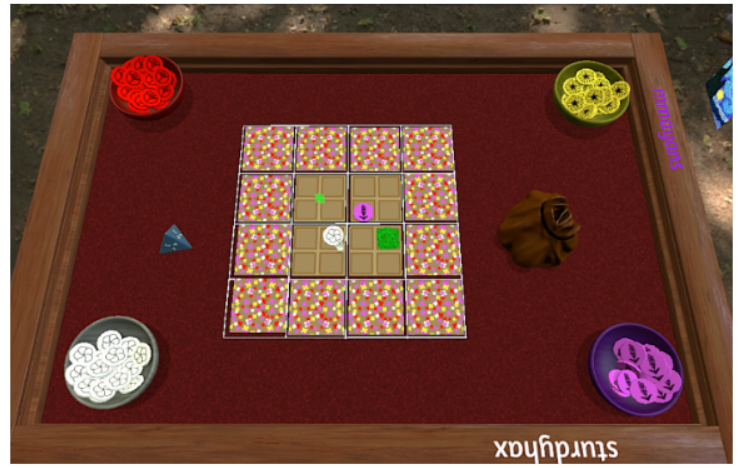
Who are the players? What are they doing? How did these squares get in this grid? If we were to assign each color to a player, and a name to those players, it can be easier to keep track of.
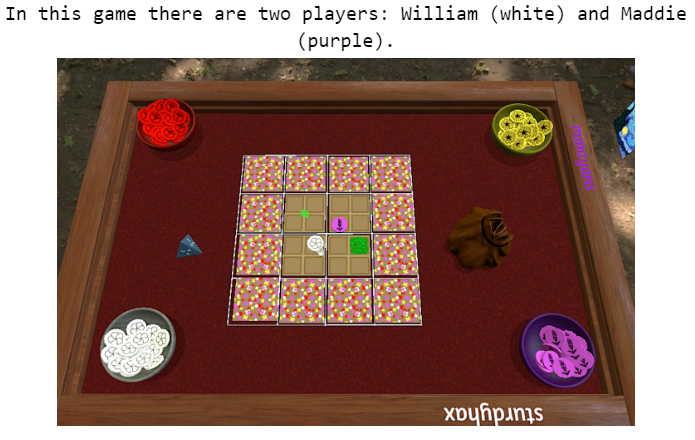
We still don’t know why the players start like this or how it came to be. You should include the set-up phase as part of your sample play document, for clarity.
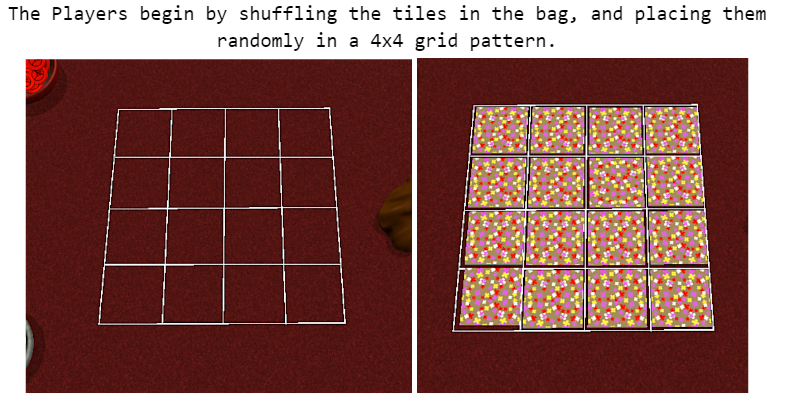

Once you have your game set-up, you can explain your game loop. Begin by explaining the first player’s turn.
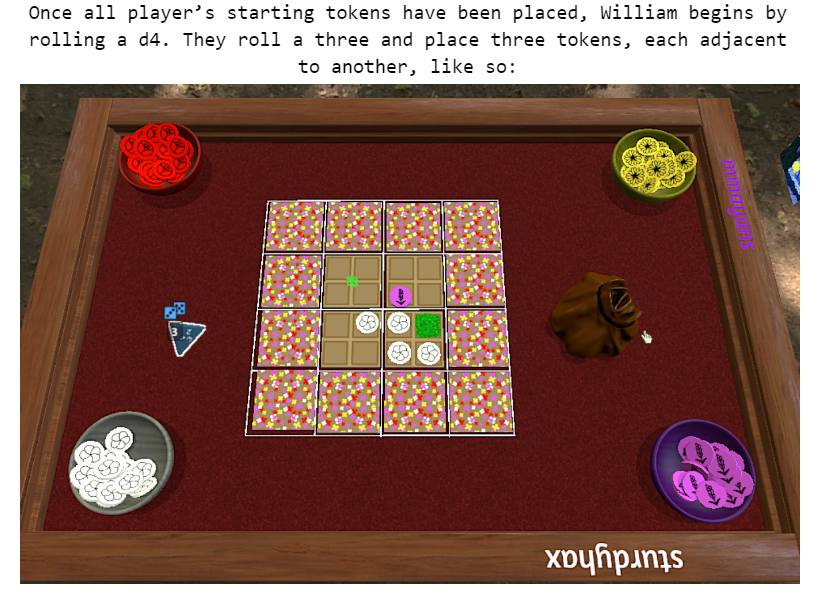
Make sure to include both the player’s actions (above) and the result of those actions (below).
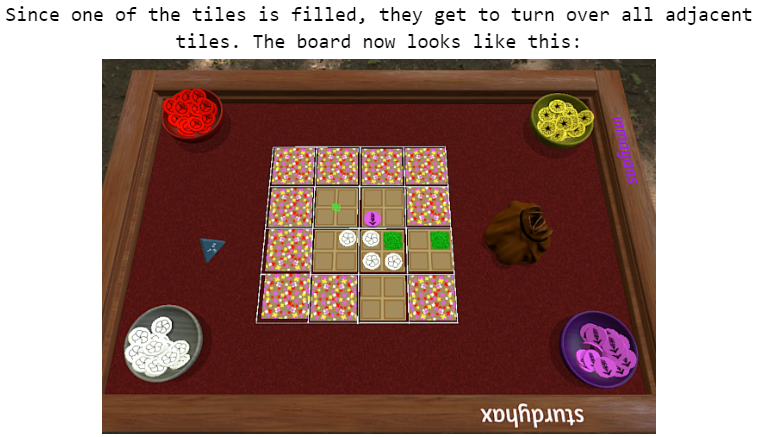
You can continue like this throughout the game, describing each turn. Make sure to include all possible actions, not just the normal ones. If your game has secret power-ups or special moves, have at least one of those happen in the sample play. Include the actions and results of that special turn. The next three images are an example of this.

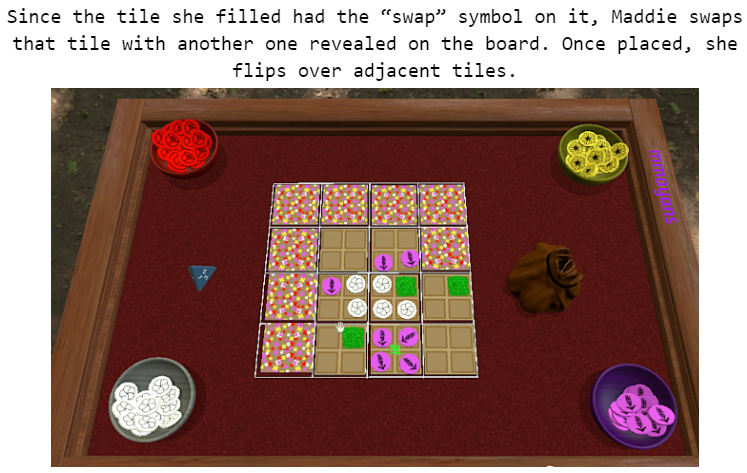
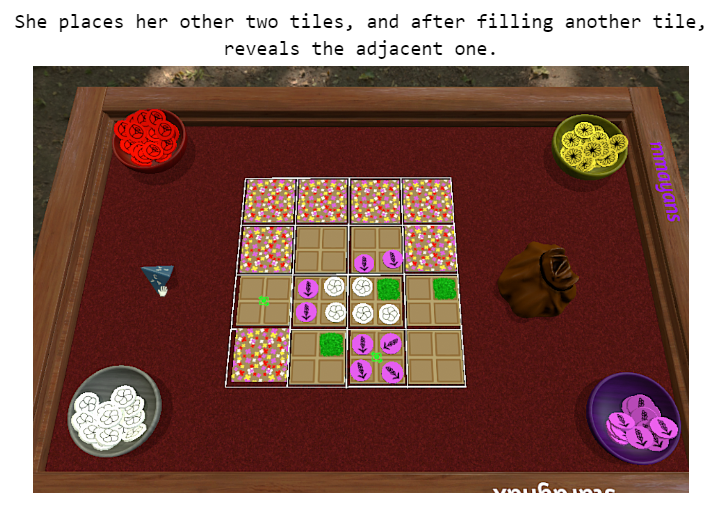
You should finish with the end phase. Be sure to specify who won and why, as well as what caused the game to end. If your game has a points distribution, give the total distribution at the end.
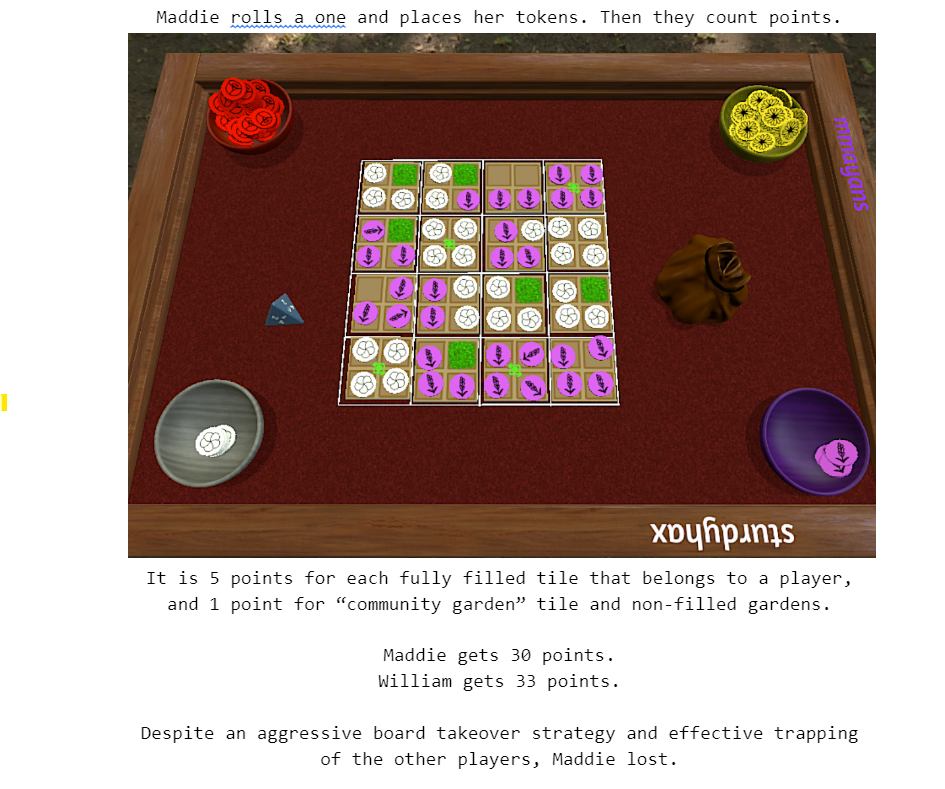
If you’re looking for a full example, here’s the TA’s Sample Play Document for our final project in CPI394: Flower Bomb Sample Play Document
ASU Game Certificate Devlog
More posts
- A Guide to Writing a Good Rules DocumentFeb 02, 2024
- Procedural Generation vs Random GenerationOct 21, 2022
- Introduction to State MachinesOct 07, 2022
- Tips for Writing a Good Pitch DocumentSep 23, 2022
- Good Debugging PracticesSep 16, 2022
- Integrating Github with Gamemaker StudioSep 02, 2022
Leave a comment
Log in with itch.io to leave a comment.